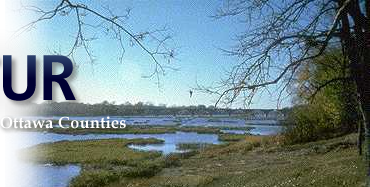Warsaw
U.S. Ambassador Victor Ashe’s Residence
 The delegation was received by U.S. Ambassador Victor Ashe at his residence for a luncheon honoring Lt. Marian Wojciechowski, a 95-year-old Polish-American veteran of the Polish Cavalry in World War II. After World War II, he gained U.S. Citizenship and immigrated to Toledo, where he lived for five decades before retiring to Las Vegas.
The delegation was received by U.S. Ambassador Victor Ashe at his residence for a luncheon honoring Lt. Marian Wojciechowski, a 95-year-old Polish-American veteran of the Polish Cavalry in World War II. After World War II, he gained U.S. Citizenship and immigrated to Toledo, where he lived for five decades before retiring to Las Vegas.Lt. Wojciechowski served with distinction in the Polish Army against the Nazi invasion of Poland on September 1, 1939 and the Red Army invasion three weeks later. He joined the Underground Home Army and fought against the Nazis until his capture. For their valor, the 21st regiment was awarded Poland's highest military medal, the "Virtuti Militari", in which Lt. Wojciechowski served as the captain of his platoon.
Wojciechowski, who was ultimately captured by the Gestapo, was brutally imprisoned for three years and tortured in Auschwitz, Gross Rosen, and Leitmeritz concentration camps. His life was saved once by a Jewish doctor and ultimately escaped with two colleagues in a daring night march as prisoners were being transferred from one location to another.
His life story is recounted in the book: "Seven Roads to Freedom."
The Historic Royal Castle

After the luncheon, the Congresswoman and her party visited the historic Royal Castle on the Castle Square that had been leveled by Nazi bombing in 1944 during WW II, leaving only the ground floor, the lowest part of the Grodzka Tower, a portion of the Royal Library, and Kubicki's Arcades.
Reconstruction of the castle began in the 1960s, with reconstruction at its basic stage completed in July 1974. The final restoration – including furnishings, paintings, and works of art – was completed in 1988.
History of the Partitioning of Poland
At the Royal Castle, Congresswoman Kaptur saw maps of the partitioning of Poland.

The maps of Poland show how the country was partitioned into three parts and disappeared from the map of Europe for 100 years.
In the 1500’s, Poland was a dominant power in East-Central Europe. However, in the 1700’s, Poland was divided among Prussia, Russia, and Austria in a series of three partitions. As a result, Poland ceased to exist as a sovereign state in 1795.
 Restoration of the Polish Republic came in 1918 as part of a settlement after World War I. That generation of Poles attempted to build a nation, only to be invaded in 1939 by Nazi Germany across western Poland, and sixteen days later on September 17, the Soviet Red Army on the eastern front of Poland.
Restoration of the Polish Republic came in 1918 as part of a settlement after World War I. That generation of Poles attempted to build a nation, only to be invaded in 1939 by Nazi Germany across western Poland, and sixteen days later on September 17, the Soviet Red Army on the eastern front of Poland. The Nazi and Communist governments then divided Poland in half. Millions of citizens in Poland's eastern half were forcibly removed from their land and sent to Siberia other parts of the Soviet Union and east of the Ural Mountains as conscripted labor in what is termed the "Kresy-Siberia" relocation.
Millions of Poles died in the bitter conditions and of starvation and disease, either in the Soviet Union or in their subsequent relocation to Iran, Palestine, Iraq and British protectorate nations in the Middle East, as the Soviet Union sent them to fight the Nazis on the western front. The largest cemetery containing Polish graves from the second World War is located in Tehran, Iran. It is estimated that Poland lost over ten million people – more citizens than any other country that fought these tyrannical regimes – literally 20% of its population at the time.
After 1945, the Communists took control of Poland under the mantle of the Soviet Union.
Beginning in 1956, Poland’s workers led the opposition to the Communist occupation of Eastern bloc nations. Beginning in 1980, the broadening Solidarity movement of citizens and workers striking against the Soviet occupation of Poland led to the collapse of the Polish Communist Party in the 1990’s after the fall of the Berlin Wall in 1989. Subsequent democratic elections were held.
The Presidential Palace
The Congresswoman’s group walked past the official Presidential Palace on their way to the Tomb of the Unknown Soldier. The palace has been the official seat of the President of the Republic of Poland since 1994. The construction of the Palace began in 1643 by Crown Field Hetman Stanislaw Koniecpolski. From the end of World War II until 1994, the Council of Ministers used the palace for official purposes.
|
|
 |
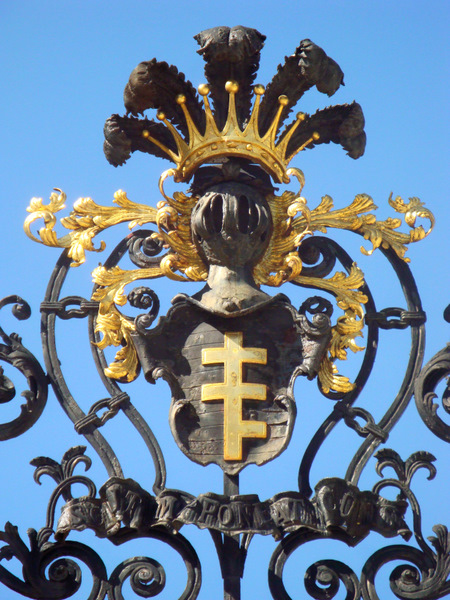 |
The Congresswoman and her party also reviewed Poland’s noble history at the Tomb of the Unknown Soldier, Chopin Park and the statue of Cardinal Stefan Wyszynski.
Tomb of the Unknown Soldier

The Tomb of the Unknown Soldier is a symbolic monument recognizing the sacrifices of Poland’s nameless soldiers. The tomb contains the body of a young Polish man who fought for Poland’s freedom in the battle for Lwów in 1919 and plate in the tomb placed over the crypt reads, "Here lies a Polish soldier who died for Homeland.”
Urns filled with earth from various other battlefields surround the tomb, which is located on Józef PiÅ‚sudski Square, where military marches take place during national holidays.
Cardinal Stefan Wyszynski
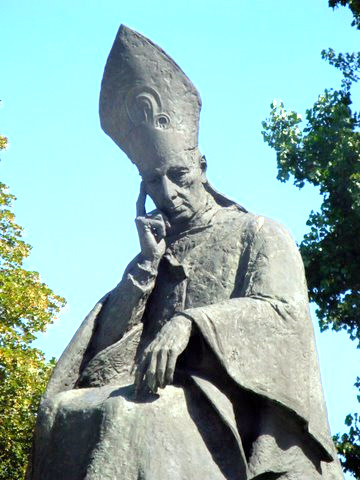 Stefan Cardinal Wyszynski served as the primate of Poland and the archbishop of Gniezno and Warsaw. During World War II, he conducted covert pastoral work and was, for a time, arrested by the Gestapo.
Stefan Cardinal Wyszynski served as the primate of Poland and the archbishop of Gniezno and Warsaw. During World War II, he conducted covert pastoral work and was, for a time, arrested by the Gestapo.
In 1952, Wyszynski was appointed Cardinal and in 1953, the Communist government put him under house arrest for refusing to punish priests who participated in anti-government activities. He was released in 1956 after Wladyslaw Gomulka came to power.
In 1978, the Cardinal played a vital role in the election of Polish-born Karol Wojtyla, who assumed the name Pope John Paul II. Many believe Cardinal Wyszynski to be the “Primate of the Millennium”.
Gdansk
 |
On September 1 at Gdansk, the world community gathered to commemorate the 70th anniversary of the start of World War II at Westerplatte Place. Congresswoman Kaptur joined the U.S. Delegation to Poland on the platform facing the enormous monument marking the shelling of Polish military positions by the Nazi battleship Schleswig-Holstein at 4:30 a.m. on September 1, 1939 on the Westerplatte peninsula. History recorded this action to be the official start of World War II. Dignitaries throughout Europe, including German Chancellor Angela Merkel, Russian Prime Minister Vladimir Putin and French President Nicolas Sarkozy were also present to join an honor guard, which placed candles and wreaths at the monument. |
 |
|
A representative of the US Polish Girl Scout Council from Chicago is pictured with the official party. |
Following the Westerplatte ceremonies, the official U.S. Delegation with U.S. Ambassador to Poland Victor Ashe, U.S. Representative Marcy Kaptur, National Security Advisor Gen. Jim Jones, USMC (ret.), and Dr. Elizabeth Sherwood-Randall, Special Assistant to the President and Senior Director for Europe, National Security Council, attended a private luncheon at Dom Pod Lososiem.
 |
 |
Grudziadz
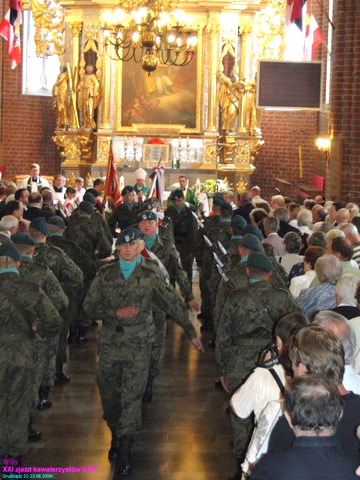 Grudziadz, the historic home of the renowned Polish Cavalry along the Vistula River, hosted commemorative ceremonies as well.
Grudziadz, the historic home of the renowned Polish Cavalry along the Vistula River, hosted commemorative ceremonies as well. Reenactments of the role of the Cavalry captivated huge audiences that lined the banks and hills.
 |
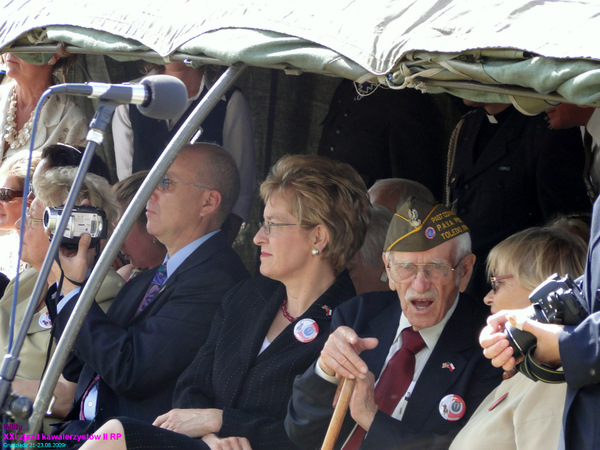 |
Congresswoman Kaptur and Lt. Wojciechowski presented official books celebrating the long history of US-Polish relations to elected officials and military leaders from the region.

Mokra
Combat on Poland's western front in WW II began at 3:30 am on Sept. 1 near Czestochowa at Mokra, as Nazi artillery shelling hit Polish Cavalry positions there, outdistancing the Poles' ability to reciprocate. Yet, the Polish achieved a tactical victory at Mokra by its 21st Cavalry brigade Wolynska, which—though underequipped compared to the Nazi forces—gained a battle advantage through effective use of an armored train camouflaged in the forest.
As a whole, the Polish Cavalry suffered tremendous losses of soldiers in the various brigades, numbered at 50-75% losses. Historians refer to these battles as "the last horseshoes." This was not just the last mounted cavalry charge of the war, but the last charge by mounted cavalry units historically, as mechanized warfare came to displace what previously largely had been hand-to hand-combat.


Congresswoman Kaptur introduced Lt. Marian Wojciechowski for remarks at the Mokra ceremony.
Mr. Wojciechowski spoke at various ceremonies during the week. He urged the Polish people to rear the next generation of leaders with the same dedication and sacrifice as his generation had tried after World War I.
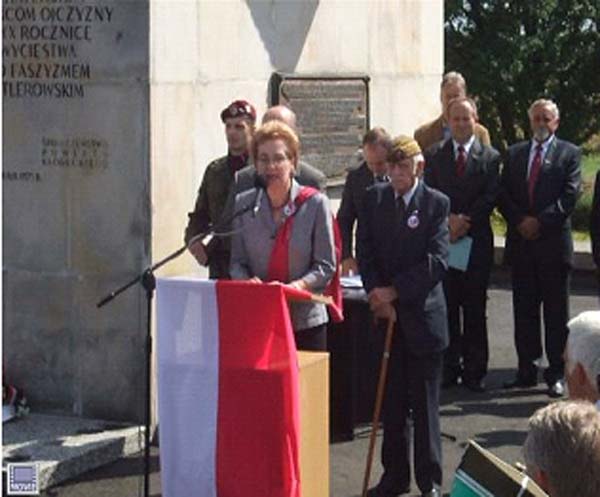 “He is a real hero,” said Congresswoman Kaptur, “and he was recognized as such at all the ceremonies. I am honored to have been his traveling companion on this journey of a lifetime—a journey into the past and present, with a vision for liberty for the future rooted in honor and motherland.”
“He is a real hero,” said Congresswoman Kaptur, “and he was recognized as such at all the ceremonies. I am honored to have been his traveling companion on this journey of a lifetime—a journey into the past and present, with a vision for liberty for the future rooted in honor and motherland.” A champion for liberty in former Nazi and communist-held lands.
 |
| Speaking at the Hungarian-American gala in D.C. |
Click here to view additional pictures from the Congresswoman’s trip to Poland.



